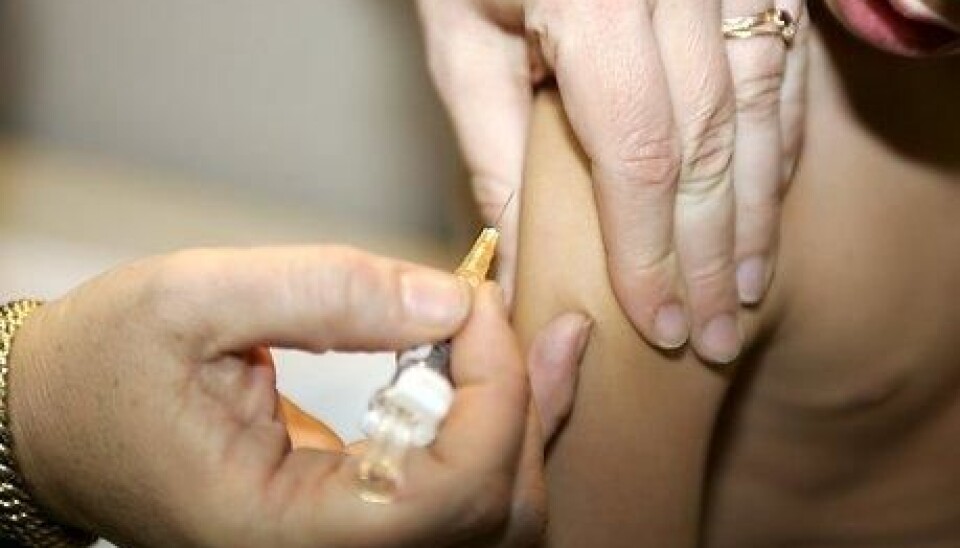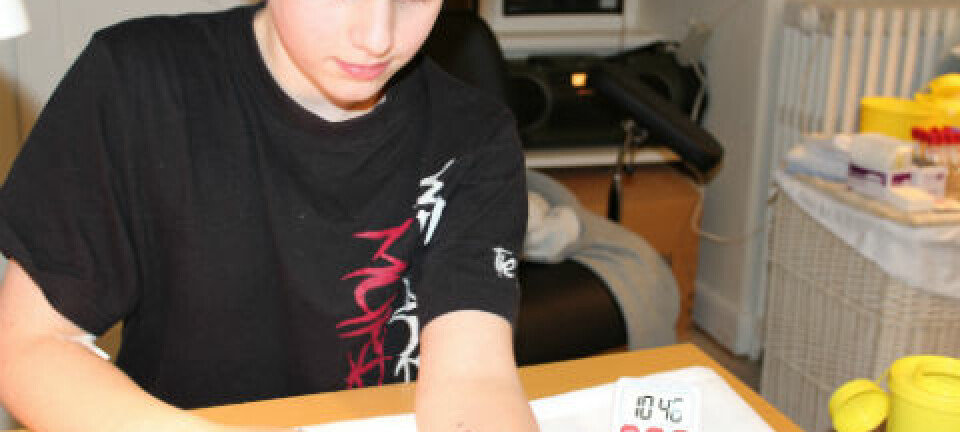
Reduce PFC exposure and rescue childhood vaccines
To ensure that childhood vaccines work, we need to reduce our exposure to harmful PFC substances. The maximum daily intake should even be reduced dramatically, new data shows.
You’ll find them in your drinking water, in your food, on your clothes and on your furniture. Perfluorinated compounds, also known as PFCs, are all around us.
But since these substances appear to dull the immune system and reduce the effectiveness of childhood vaccines, the acceptable daily intake (ADI) needs to be significantly reduced, according to new calculations from Professor Philippe Grandjean and colleagues at the University of Southern Denmark.
”The European food authorities need to lower the dose for the amount of PFC that people can tolerate by a factor of 100 as soon as possible. With the current values we risk that our childhood vaccinations will become less effective at protecting the children against diseases,” says Grandjean.
“Parents send their kids to a string of doctor’s visits to get all the vaccines needed to prevent them from being hit by dangerous viruses. With the current ADI values, parents cannot be sure that their child is properly protected. It’s quite frightening.”
Data from earlier study
In their study, the researchers have calculated the maximum amount of PFC that the average person can consume in a day, without it impairing the efficiency of the vaccines.
The data came from a study carried out in the Faroe Islands last year. That study revealed that PFC in the children’s bodies impaired the effect of childhood vaccines, even at normal concentrations/levels.
The current maximum ADI was set back in 2008 by The European Food Safety Authority (EFSA) of which Grandjean himself used to be a member. The limits were set based on the information available at the time about the toxic effect that these substances have on the liver and the thyroid.
Samples from Faroese children
The data in the study comes from a 2012 study in the Faroe Islands, where blood samples were taken from 431 pregnant women before birth and a new test of the children immediately prior to the fourth diphtheria and tetanus shots. These samples were used to determine the level of PFCs in the blood.
The children’s concentration of antibodies against the diseases they had been vaccinated against was also measured immediately before the final vaccination, and again after their seventh birthday.
It turned out that the amount of antibodies that protect against the diseases was halved each time the PFC concentration was doubled. The children who had high concentrations of PFC in their bloodstream at age five experienced the greatest dip in the effectiveness of the vaccines. A full ten percent of the children had an antibody concentration so low that it was doubtful whether the vaccines had any effect at all.
Data points to lower limit values
It is this correlation between the PFC concentration and the effect of childhood vaccines that Grandjean and colleagues have based their new calculations on. Their data sets reveal how the body responds to vaccines at relatively high PFC concentrations.
But with some mathematical sleight of hand, they managed to calculate the highest possible concentration in the bloodstream at which the effect of the vaccines is not impaired.
This maximum blood concentration was then converted into a new ADI value. Grandjean is now hoping that the EFSA will be using these new figures when it’s time to reassess the ADI for perfluorinated compounds.
-------------------------
Read the Danish version of this article at videnskab.dk
Translated by: Dann Vinther
Scientific links
- “Immunotoxicity of perfluorinated alkylates: Calculation of benchmark doses based on serum concentrations in children”, 2013, doi: ?
- “Fluorochemicals used in food packaging inhibit male sex hormone synthesis,” doi: 10.1016/j.taap.2012.10.022
- “Serum Vaccine Antibody Concentrations in Children Exposed to Perfluorinated Compounds,” JAMA. 2012;307(4):391-397. doi:10.1001/jama.2011.2034










